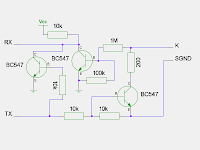Recently I've become increasingly annoyed by the shortcomings of the dashboard in my car (a Toyoya Aygo). Some of the annoyances are impreciseness of the fuel gauge, lack of coolant temperature display and the fact that I no longer have a real time clock. (The clock is integrated in the factory mounted car stereo which I've replaced with an aftermarket stereo)
I've looked for solutions and found the
ScanGauge II trip computer quite interesting. But considering it's priced at €150 and is basically an
OBDii interface with a microcontroller and an LCD display I decided I can probably build something better and cheaper myself.
A while ago I found the excellent swedish "electronics hacker store"
electrokit and have been thinking about a suitable project to revive some of the things I learned while studying at
ISY. So I ordered some AVR microcontrollers, LCD displays, voltage regulators and fired up the soldering station for the first time in a while.
Here is a picture of the current project status:
 |
| Work in progress trip computer |
To the left is a stripboard with a TO220 package voltage regulator to convert the 12V car supply to the TTL levels I need for my trip computer circuit. I also put a one amp glass fuse on there for electrical safety so the car doesn't catch fire in case I screw up the soldering.
On top is the AVR microcontroller. It's a surface mounted package which comes presoldered on a breakout board under the
Arduino brand name. It also comes with a pre-installed boot loader for rapid prototyping, which is nice.
The flat cables are dual
HD44780-compatible LCD display outputs wired up to the AVR. Embedded in the hot-melt glue are also two NPN transistors and resistors for driving the LCD backlights with
PWM.
Not pictured is the TTL conversion circuitry for the car diagnostics port. I will probably finish that part tonight.

